Research
Smothered by Seaweed
Explore the rise of sargassum blooms, their impact on marine ecosystems, and the urgent need for innovative solutions to protect coastal regions.
The key to tackling this issue lies in understanding its root causes, mitigating its impacts, and harnessing its potential.
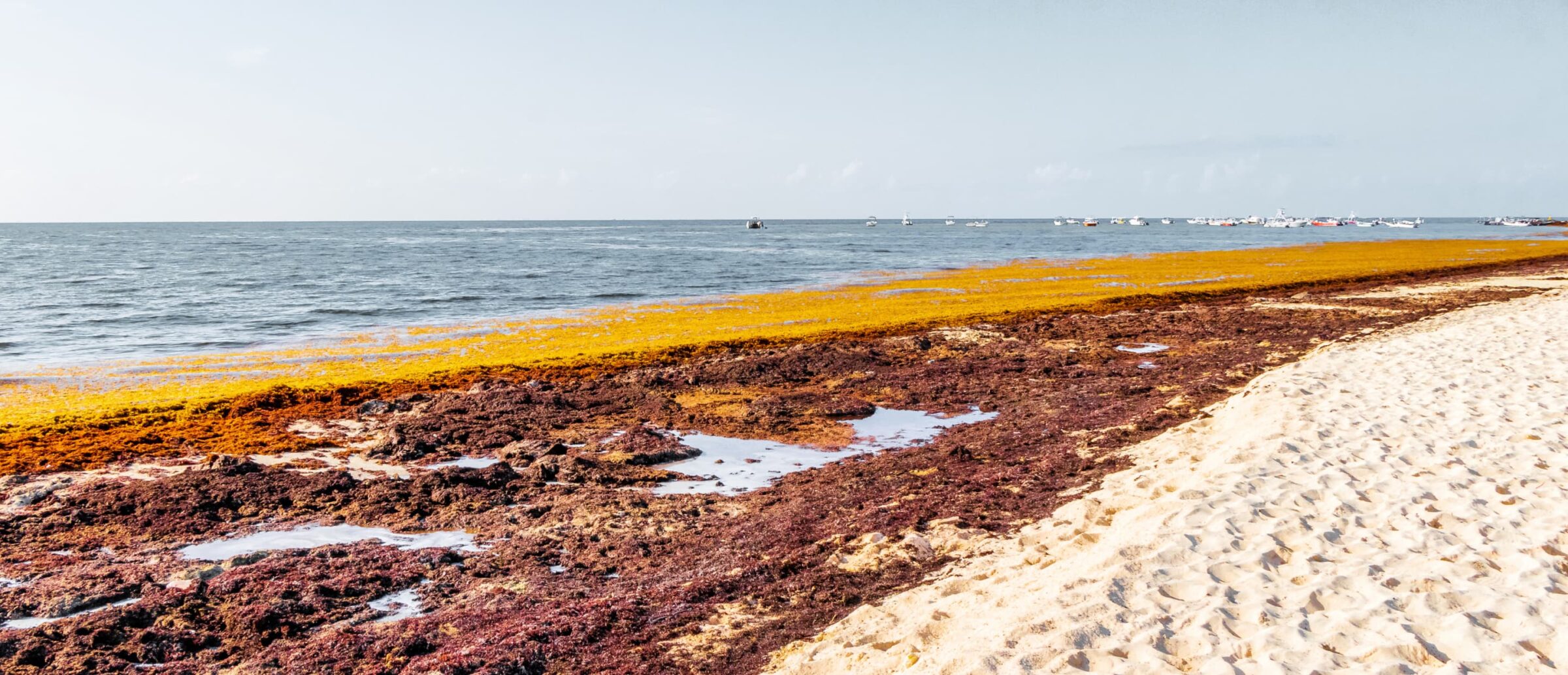

Sargassum is a large brown seaweed (a type of algae). Found in free-floating mats, held afloat by gas-filled bladders which can stretch for miles across the ocean. These floating mats have been a feature of the Atlantic Ocean since before the first European sailors to the New World were stuck/becalmed in it and are described as the rainforest of the ocean. This floating habitat provides food, refuge, and breeding grounds for an array of animals such as fishes, sea turtles, marine birds, crabs, shrimp, and more. Sargassum serves as a primary nursery area for a variety of important fishes such as mahi mahi, jacks, and amberjacks.
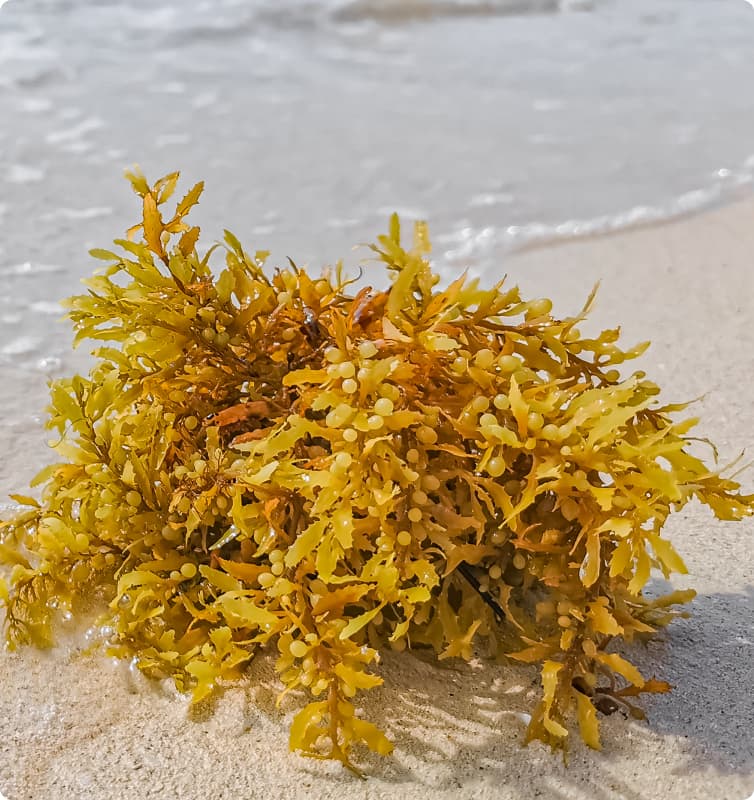
When Sargassum loses its buoyancy, it sinks to the seafloor, providing energy in the form of carbon to fishes and invertebrates in the deep sea, serving as an important addition to deep-sea food webs.
Sargassum is a healthy and vital part of the ocean ecosystem. So, what's the problem? Traditionally this seaweed lives in a nutrient poor environment. A combination of river runoff into the ocean, sewage and runoff from farming and forestry operations, along with increased ocean temperatures created the perfect environment for its growth. As rivers flood, like the Amazon did in 2010, even larger quantities of run-off fueled the growth even more. As run-off continues and the ocean continues to warm, the seaweed continues to grow and flourish in quantities that the marine ecosystem cannot handle
By 2024 the sargassum blooms, tracked satellites, stretched 5,750 km from the Amazon to the Congo River in West Africa with an estimated mass of 25 million tonnes.
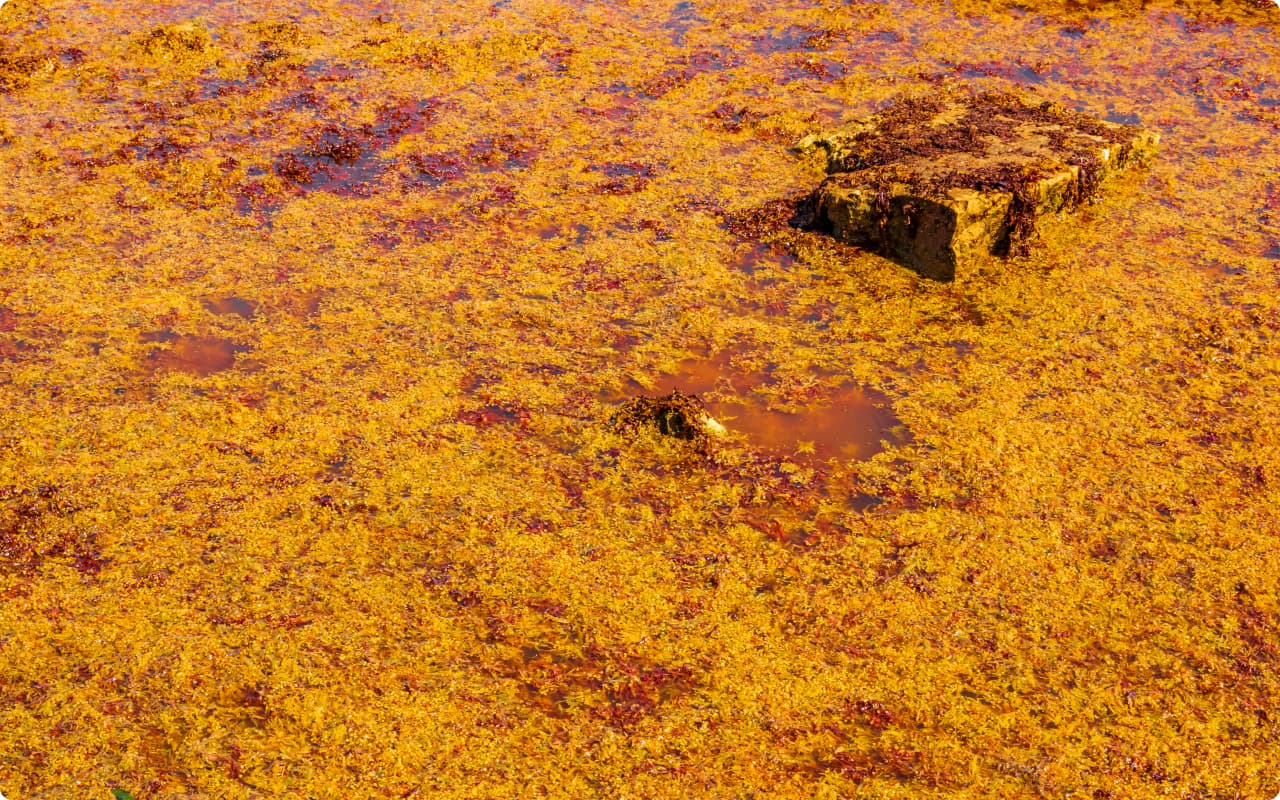
The massive amounts of Sargassum are forming brown tides nearshore, smothering fauna and flora including coral reefs. Sargassum mats are also clogging water intake pipes used in critical infrastructure (for example, in desalination plants that produce drinking water). After it lands onshore Sargassum begins to decompose decomposing on the beach, producing hydrogen sulfide, a gas that smells like rotten eggs, which can cause respiratory irritation.
Phosphorus and another nutrient, nitrogen, are key ingredients in synthetic fertilizers. Without the nutrients that fertilizers provide to crops, we would not be able to grow our food.
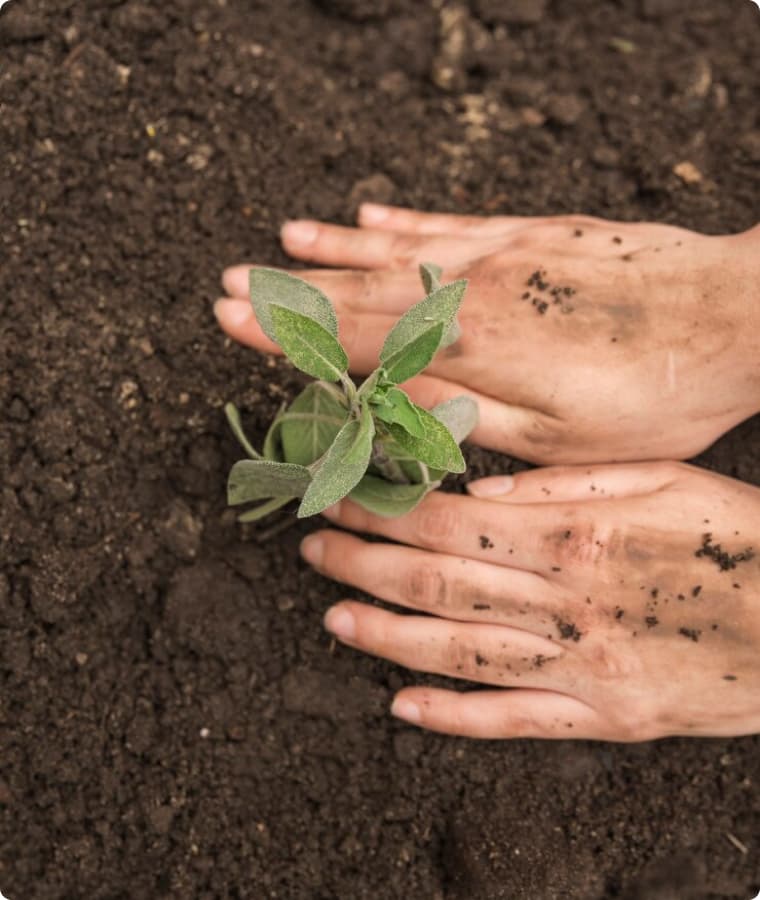
But one of the hallmarks of the modern agriculture system today is a massive overapplication of synthetic fertilizer. They have become increasingly popular in recent decades but can have devastating effects when they enter lakes, rivers and the ocean. The impacts are so large that in 2018, a group of nitrogen experts determined that the world must halve the amount of nitrogen dumped into the environment to avoid the worst impacts on wildlife.
Plants get these nutrients as part of a natural cycle. Animals excrete nitrogen in their manure and urine, and together with the breakdown of dead and decomposing plants, these nutrients are incorporated into the soil for the next growing season. But the vast majority of agricultural production today is fueled by synthetic fertilizers. Now communities like the Caribbean islands are paying for a problem they have almost no contribution in creating.
Various factors affect the cost of cleanup, from the amount to strategy, machinery, transportation and disposal. People have employed a variety of solutions to try and tackle the problem. Most communities are forced to deal with the seaweed after it lands onshore, using bulldozers, and manual raking to remove it. A very time consuming, expensive process that needs to be done daily and leaves you with mass amounts of rotting seaweed to deal with. The use of heavy machinery to remove Sargassum can also result in the loss of sand and contribute to beach erosion. Others have employed the use of dredge pumps. Others have begun placing booms a few miles from the beach to stop the seaweed from reaching shore.
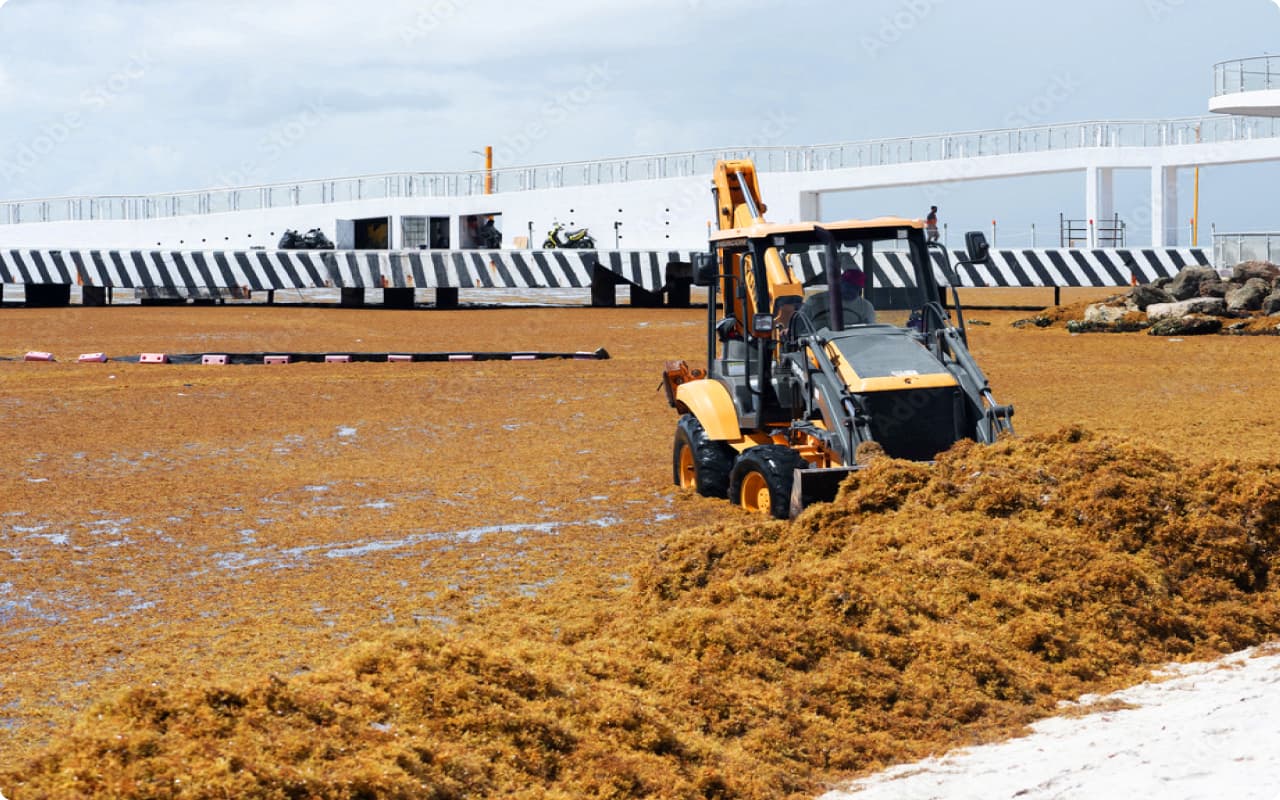
The disposal of sargassum presents a significant challenge due to its bulk and weight, requiring numerous trucks for transportation. For example, the Ritz-Carlton in the USVI removes up to six 40-yard bins of sargassum daily, which must then be trucked away and appropriately disposed of.
Research indicates that decomposing sargassum releases leachates and contains high levels of arsenic. Proper management during land disposal is critical to prevent contamination of water sources. Clean-up costs vary and depend on factors such as the amount of sargassum, machinery needed, transportation and disposal. Florida estimated $35 million dollars as the annual cost to collect, transport, and landfill Sargassum. The U.S. Virgin Islands Department of Planning and Natural Resources Commissioner estimated the daily cost of removing dense inundation of decomposing Sargassum at $25,000 per day.
$210 Million
Costs in the Caribbean have recently been estimated to reach as high as $210 million in a single year.
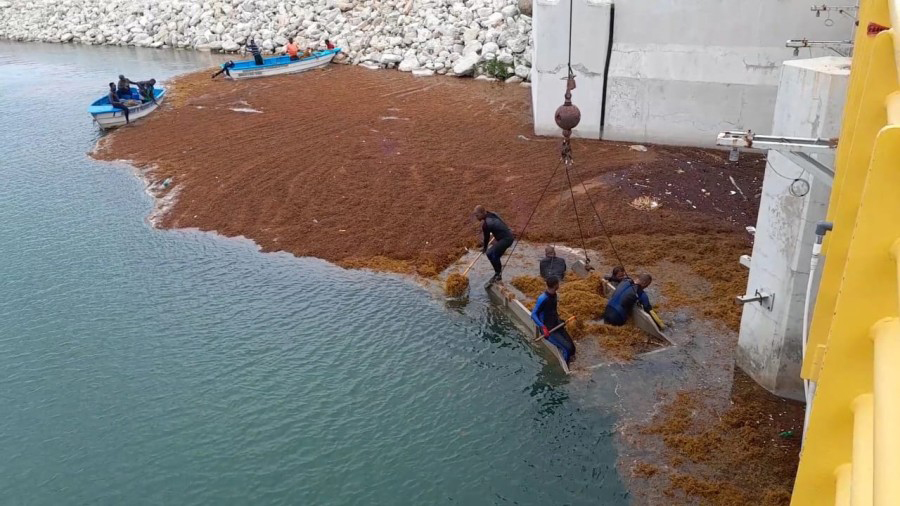
Research
Explore the rise of sargassum blooms, their impact on marine ecosystems, and the urgent need for innovative solutions to protect coastal regions.
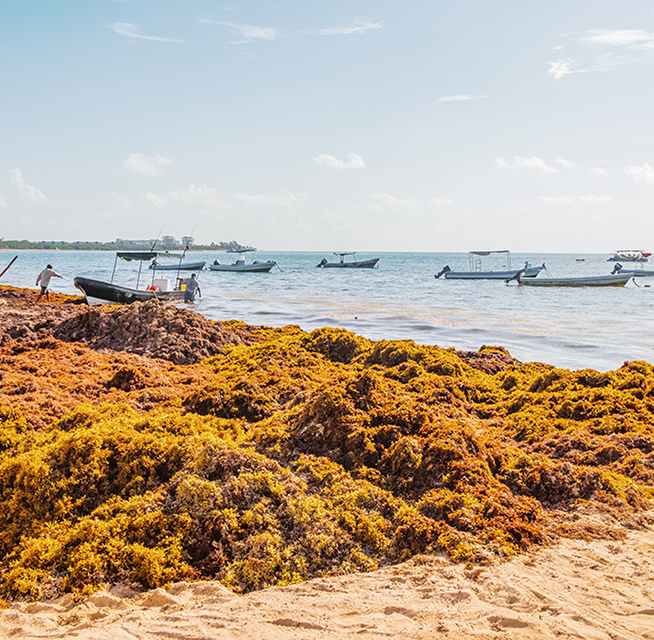
Research
An abundance of sargassum can threaten delicate shoreline ecosystems, as well as smother coral reefs, reducing their cover and roughness, which makes them more susceptible to waves and have less protection from hurricanes. It can also prevent hatchling sea turtles from reaching the ocean.
The good news is that there could be some uses for the masses of sargassum, including using it as biofuel or even as building materials.
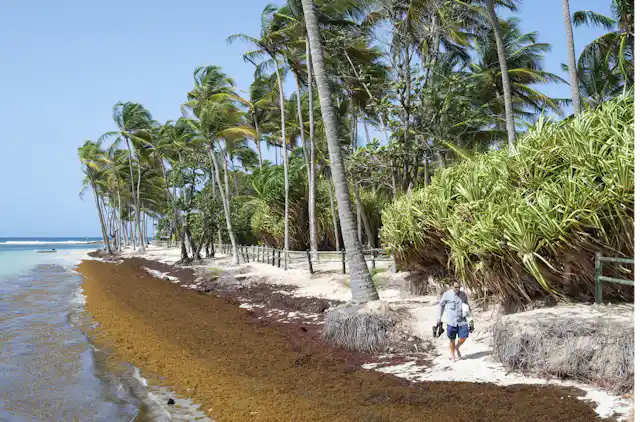
Statistics
Discover how sargassum, once seen as an ecological burden, can be repurposed into sustainable products, turning a challenge into an opportunity.
If you didn't find an answer in the FAQ, leave a message and our support team will contact you.
Contact usWe proactively capture sargassum offshore before it can reach coastal ecosystems and island communities, preventing environmental and economic damage before it occurs. Instead of allowing it to pile up in landfills, we repurpose it into valuable, sustainable bio-soil—transforming a major ecological challenge into a resource for sustainable agriculture and land restoration.
Our approach prioritizes the protection of delicate ocean ecosystems while ensuring no harm to marine flora and fauna. By stopping seaweed mats before they reach the shore, we prevent environmental issues from arising. Then, our gentle collection process ensures that marine life, including turtles, starfish, and other bio-catch, is carefully returned to the ocean unharmed.
Bio-stimulants support sustainable farming by optimizing plant health and productivity. A bio-stimulant enhances plant growth, resilience, and nutrient absorption without directly supplying nutrients like fertilizers. It improves crop quality, stress resistance, and yield.
Uses include:
· Growth & Yield: Promotes budding, increases crop yields, and enhances flavors and color.
· Stress Resistance: Boosts drought and disease resilience, deters pests, and reduces transplant shock.
· Post-Harvest Benefits: Extends the shelf life of fruits, vegetables, and cut flowers.
· Root & Seed Treatment: Enhances root development and seed germination.
· Pasture & Field Crops: Improves nutrient uptake, protein content, and overall crop quality.
Read our blog post all about biostimulants and how to use them here. (we will want to get a post on this done soon)
WE currently have operations in the United Kingdom and Barbados.
We'd love to connect with you! Send us an email at info@tritonrs.org to explore how you can get involved and support our mission. If you are a sargassum end user, please contact us and let's discuss how we might be able to supply you with sargassum harvested from the sea.
We use advanced satellite imaging, drones, and AI algorithms to locate and harvest sargassum efficiently. Our process transforms this seaweed into eco-friendly bio-fertilizer, creating sustainable solutions for agriculture while protecting marine ecosystems.